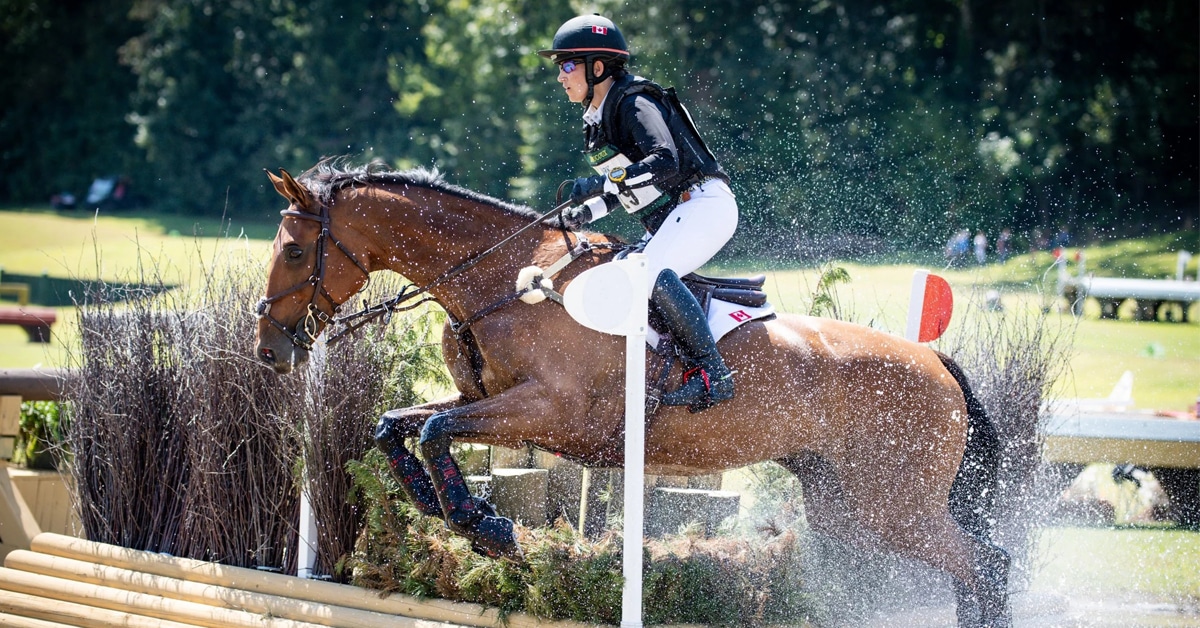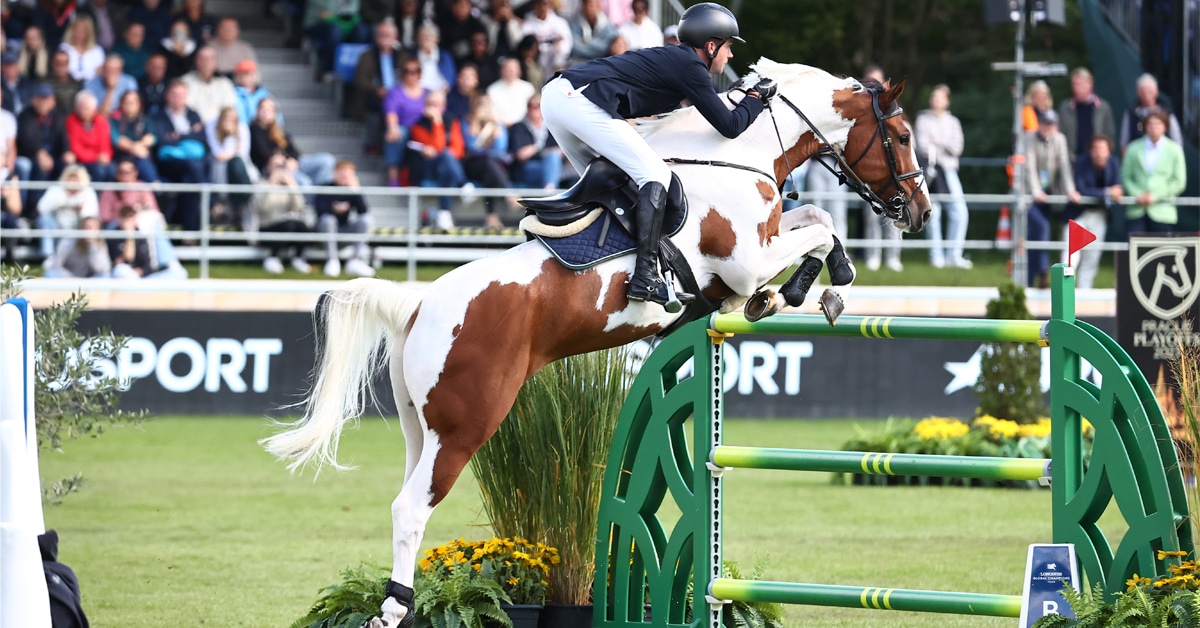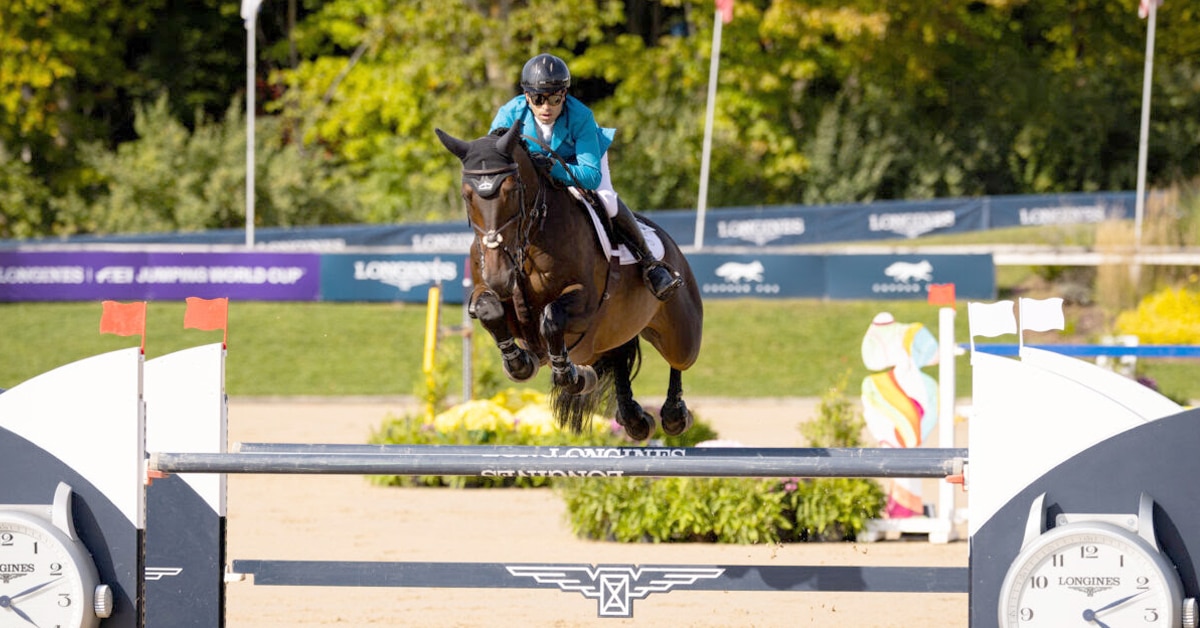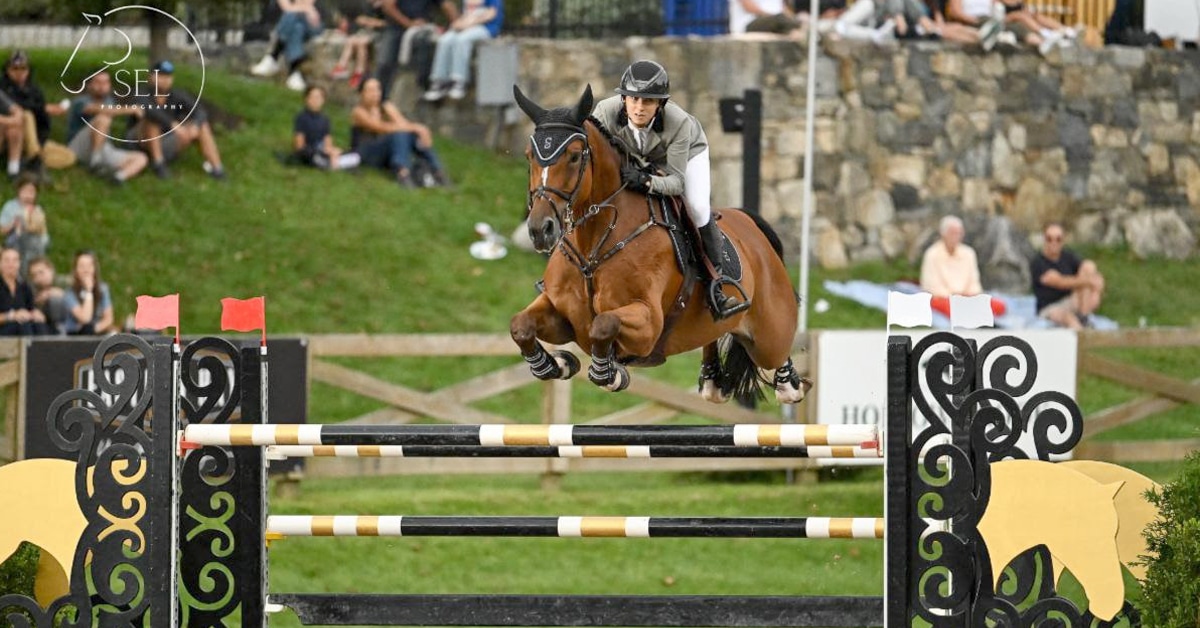The Equestrian Canada (EC) Board held an emergency meeting on Jan. 31, 2017 to discuss concerns expressed by EC volunteers and some members of the equestrian community, and to determine the next steps in addressing these concerns. The Board also confirmed their total confidence in the current leadership of EC, specifically of its President, CEO and Director of Finance. Our reasons for this vote of confidence are outlined below.
To start, it bears mentioning that while this statement is lengthy, we felt it was our duty and responsibility to ensure we provide a comprehensive statement to address questions and concerns in full.
The Board and CEO certainly acknowledge that this past year has been challenging as we continue to restructure and professionalize EC’s governance and operations. We’ve made some improvements. We’ve made some mistakes. We’ve implemented some changes successfully and others continue to be a work in progress. Change is not easy. We have implemented changes that have not been easy for everyone to adapt to or accept. Nevertheless, we are fully committed to working with the community and our members to fix our mistakes and build a better Federation.
In 2014 we recognized and publicly acknowledged that we were failing to meet the needs and expectations of our various communities. We needed to rebuild and redefine our partnerships and working relationships across the whole organization, and we needed to take a hard look at the way resources (the money and the people) were being invested across the organization in order to achieve our mandate and better serve our members and partners.
Good governance is complex and people often disagree on the best way to ensure an organization achieves its objectives. EC has not been immune in the past to challenges concerning previous efforts to revamp and modernize its Governance. This is normal.
Under the Canada Not-for-Profit Corporations Act (“NFP Act”), the Board has a legal obligation to act in the best interests of EC as a whole, including the equestrian sport disciplines, the Provincial/Territorial Sport Organizations (PTSOs), and the industry affiliates. No other group in the organization has this financial or legal obligation. To ensure we meet this responsibility, the Board hired a CEO to supervise and manage the operations of EC. The Board, together with its CEO, is committed to consider the concerns and competing interests of our stakeholders and to strategically and professionally prioritize the needs of our constituents and work collaboratively with our communities to move the organization forward.
EC Governance and Operations
Restructuring the governance and operations of EC has necessitated the development of new Bylaws, a new voting member structure, and redefinition of the roles, responsibilities, accountabilities, and authority of staff and volunteers across the organization.
By-Laws and VOting Members Structure
EC was required to make changes to its Bylaws in order to be compliant with the NFP Act because the organization was at risk of being dissolved. The development of the new Bylaws was a collaborative process that brought leaders from across the organization together to generate and recommend a set of Bylaws that would be acceptable to the EC membership.
In September 2015, the EC membership approved the Bylaws. Member voting rights prior to 2015 were not taken away by EC; they were restructured following proper process that included the ability for all members of EC to vote.
Voting Member Structure
The new Bylaws in 2015 included a new voting member structure in EC. The structure consists of three Categories of Membership – Category A: Equestrian Sport Disciplines, Category B: PTSOs, and Category C: National Equine Affiliates.
Each category designates nine (9) members with voting rights. The first group of Voting Members was voted in by the four EC Councils within the previous governance model (Sport, Provinces, Industry, Recreation). EC is working with its constituents – sport disciplines, PTSOs, and industry affiliates – to evolve and improve the process by which Voting Members will get elected in the future.
The Voting Member structure was proposed by the Bylaws Taskforce and accepted by the EC membership in order to create a closer working relationship between EC and members who are motivated, well connected and well informed on the category they represent. It also addressed fundamentally broken aspects of the previous member structure, such as voter apathy and organizational silos operating independently from strategic priorities of the organization for their own (sometimes conflicting) objectives.
Committees and Operating Processes
Less than one year ago, EC was comprised of 142 committees, each with the ability to make decisions on behalf of EC without legal or financial responsibility for those decisions. We were faced with the difficult task of restructuring the EC Committees by:
1. Significantly reducing the number of committees at EC to create a manageable structure.
2. Clearly delineating governing committees (committees that support the Board’s work) and operational committees (committees that support the operations of EC).
3. Finding a way to create a better balance between the role of the volunteers and the role of the staff so that both parties could work collaboratively to best provide services to the community.
We acknowledge that there have been problems during this time of transition and that our new operating structure needs more work. It is in the early stages of implementation and is structured in a way to be flexible and adaptable to the needs of the organization. We will work collaboratively with EC’s volunteer community to achieve the right balance of committees needed across operations to effectively move programs and initiatives forward – because we all share in the responsibility to deliver great services to the membership.
The bottom line is that we believe in the structure that has been put in place. We know it is not yet working as it was envisioned, but we also know that through solidarity, cooperation and collaboration that we can get it working and fully realize the goals of the new governance and operational structure.
To learn more about the EC’s governance and operations structure, how it works and how it was implemented, we invite the community to review the Governance FAQs on the EC website.
Financial Update
In 2015, the decision was made by a previous Chief Financial Officer (CFO) and supported by the Board to invest in a new and up-to-date accounting system for EC to replace the outdated ACC PAC DOS system. The implementation of the new system in 2015 was slow, and the abrupt departure of our previous CFO in March 2016 (the last month of our 2015-2016 fiscal year) made the task of implementing this new accounting system even more difficult.
The subsequent CFO inherited the task of implementing the new accounting system while simultaneously preparing for the 2015-2016 audit process. This monumental task became even more challenging, and then simply got worse with further unanticipated personnel changes. It became apparent that even with additional resources in the finance department, further reorganization was required, resulting in the hiring of our current CFO, Mike Mouat.
The Board and CEO are completely confident in Mike’s ability to get our financial systems back on track as significant progress has already been demonstrated in this regard. The immense task of updating, reconciling and consolidating our financial reporting system takes time. To date we can confirm that the EC Board received and approved a budget in April 2016, as well as an updated budget in December 2016. Furthermore, the EC Board has been fully apprised of the implementation of the new accounting system and progress the Finance Department is making on producing financials. Rest assured the financial health of the organization is not in jeopardy. The Board continues to receive regular financial information from management.
EC is obligated to produce annual financial statements audited by an independent auditor. EC has always delivered independently audited financial statements, including audited statements for the 2015-2016 operational year. These audited statements are available to the public, and together with all financial statements since 2011, can be found on the EC website at www.equestrian.ca/about/governance. EC will continue to be compliant in 2017 in delivering audited financial statements to the EC membership.
The decision to change the auditors of the corporation is a decision of the EC Voting Members. It was proposed by the Chair of the EC Audit Committee to the 27 Voting Members. During the AGM in September 2016, the Voting Members approved for the Auditors of the Corporation to be changed.
Operating Deficits
EC has historically had operating deficits in years where there are major games, such as the FEI World Equestrian Games in 2014 and the Olympic Games in 2012 and 2016. These operating deficits in the restricted funds are pre-planned by the discipline committees who draw down on the discipline’s restricted funds to cover planned operating deficits. This is normal business at EC and has been for many years. In 2015-2016, there was an operating deficit on the unrestricted side of the budget, which was explained in detail in the Audit Committee report on the EC website. The deficit was a result of:
i. unplanned employee severances in February and March 2016;
ii. an unreported operating loss not disclosed by a previous CFO on an Industry initiative called Pan Am Horse Experience; and
iii. the failure on the part of a previous CFO to submit required reports to Ag Canada pertaining to grant funding.
This error was discovered during the 2015-2016 audit process and subsequently rectified, resulting in the restoration of Ag Canada funding to EC.
Funding and New Revenue
In 2016-2017, EC secured $1,097,500 in Sport Canada funding.
From March 1, 2015 to December 31, 2016, EC secured additional new revenues as follows:
• $266, 000 from the Canadian Olympic Committee (COC) to cover the costs of key projects including the restructuring of the governance and operations of EC, the EC rebranding project, the Competition Governance Audit by Mushroom Cloud, and the High Performance Review. The HP review and Competition Governance findings are works in progress and final decisions will only be taken by the Board after consultations with key EC stakeholders, including the PTSOs and Discipline Committees. Membership money was not used for these initiatives.
• $393,000 in secured sponsorships.
• $170,000 in Value in Kind (VIK) sponsorships to support our Canadian Equestrian Team at the 2015 Pan Am Games and 2016 Olympics.
Restricted Funds
EC’s finances are comprised of Unrestricted and Restricted Funds. Both Funds are collected and managed by the EC national office, but in the case of the Restricted Funds, the allocation and spending of the Restricted Funds is directed by the discipline committees.
There is full recognition within our Board and management team that Restricted Funds are collected through EC’s administrative processes for the benefit of sport disciplines. We can confirm that the discipline Restricted Funds remain intact, are directed by the discipline committees, and managed by the EC national office. Suggestions that EC is attempting to wrestle control of the Restricted Funds away from the Disciplines are patently false. EC’s challenge with the Restricted Funds centers on the accountability for these funds and the reporting of the use of the funds to the community.
Restricted Funds are collected by EC and involve the use of EC’s personnel, systems and record keeping. As the collection and distribution of these monies are part of EC’s audited statements and financial reporting processes, the Board is accountable to the membership for these funds. The Board, in turn, holds the CEO accountable for these monies, since the collection and disbursement of funds is an operational matter.
It is compulsory that there be proper mechanisms to ensure accountability. Accordingly, we need to be able to properly document expenses and financial transactions through invoicing duly approved by the discipline committees. Furthermore, proper legal contracts must be in place where contractual arrangements bind EC and direct the distribution of funds. EC is working collaboratively with its discipline committees to put these protocols in place. EC is not directing where the funds are being spent, but is ensuring that the funds are being spent appropriately and are directed toward achieving the objectives of the organization. This oversight of the Restricted Funds is a critical component in ensuring that accountability is prevalent throughout the organization.
While we are working on the serious issues we’ve had with the preparation and dissemination of monthly financial reports, the Board is confident that EC’s financial position remains sound and is clearly not out of control. Every important spending decision in the current financial year has been thoroughly vetted and approved by the Board.
Incremental revenues secured by the management team in the last 18 months are significant and encouraging. Discipline reserve funds are secure and have been managed by the discipline committees and discipline managers, as in the past. Finally, the principal driver of short-term deficits has been the 2015 Pan Am Games and the Rio 2016 Olympics. This is not unusual. EC is and will continue to be in full compliance with all fiduciary responsibilities under the NFP Act.
Conflict Of Interest
EC has approved conflict of interest policies and protocols for the Board, volunteers, and staff members. These policies and protocols have been applied across the organization on all matters where real and perceived conflicts of interest have arisen.
Communication
Clearly we have failed in our responsibility to communication adequately with our constituent communities. There appear to be a number of concerns that are primarily the result of misunderstanding due to the lack of good lines of communication. We need to do a much better job of communicating how and why decisions have been made and we are committed to making immediate efforts to do so.
We can all improve our communications. For EC to flourish, communication is essential. Communications must be respectful. Questions, comments and suggestions are welcome and can strengthen the organization. Personal attacks, however, do nothing but divide organizations and divert them from achieving their objectives. If four strong horses pull in one direction and four equally strong horses pull in the opposite direction, the organization goes nowhere. Working together can provide the best benefit for all of us.
EC is fully aware of the public outcry that has been circulating expressing concerns about the management and governance of its organization. The personal attacks and airing of “dirty laundry” in public does not serve EC or its membership well, and EC will not engage in such action. EC will respond to the authors of the letters of concern directly, respectfully and professionally; and we ask that all participants recognize the damage that can be done to the organization by untoward comments. People in an organization such as ours may come and go, but the reputation of the organization, both internationally and within the sport community may be irreparably harmed by inappropriate public communication. There are mechanisms to address any concerns and waging a public battle is akin to cutting off one’s nose to spite their face.
We can rebuild a better Equestrian Canada and we need your help to make it happen. We encourage everyone to engage with us through honest, open and respectful communication in the best interests of the organization and all members of the community. And, of course, we commit to doing the same.
Sincerely,
Equestrian Canada Board of Directors
board@equestrian.ca
More News








